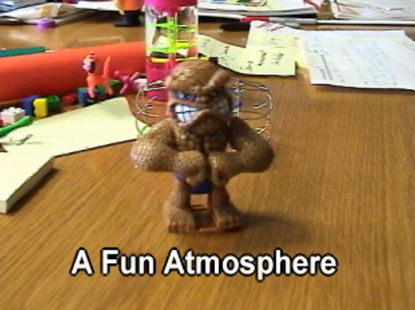Ten years ago today, I led our internal communications team in a variety of creative thinking exercises to develop ideas for our upcoming two-thousand person employee and customer Transformation conference that January in Las Vegas.
The session had both high and lows, as I recall.
Creative Thinking Exercises - Ten Valuable Lessons
I recently found ten lessons I wrote down at the Transformation Conference creative session’s conclusion that pertain to group facilitation.
Beyond the Transformation Conference ideas the group identified, the session was important since it:
- Prompted a go-to story on individual challenges with personal creativity (the Becky story)
- Helped identify how to deal with people who want nothing to do with creative thinking exercises
- Necessitated an adaptation to Chuck Dymer’s Trait Transformation exercise that helped navigate through it thoroughly and quickly.
Some group facilitation lessons were very specific to the session (including giving Becky’s real name), so they are generalized here.
In their more general format, they are valuable lessons for anyone trying to facilitate a diverse and unruly group of people through creative thinking exercises!
- Take a minute at the start and explain to people why we’d do something where you don’t have to consider logistical or budgetary reality when saying ideas (this environment is what made Becky shut down).
- Tell people it’s okay that they haven’t experienced the thing that you’re innovating. It actually makes them strong innovators because they’re looking at it with completely fresh eyes.
- At a minimum, identify someone to help when facilitating a session by yourself. They are invaluable for gathering ideas and moving things around in the room when you are facilitating.
- Make sure if you have people select good ideas that you don’t fail to get them categorized as “better” ideas. If not, ideas people picked out as “special” might be merged back in with all the other ideas (and you lose the valuable input on stronger ideas).
- Trait Transformation is a great group exercise and a wonderful place to start a session. It really works to think through which cells you’ll likely go to ahead of time; it makes the exercise flow better.
- Set an expectation on the number of ideas generated for each of the creative thinking exercises. It gets people to generate more ideas and puts more pressure on them to just say ideas and not assess them.
- Watch for people who are bogging down groups and move them into other groups.
- If you have enough naysayers for a small group, put them all together and don’t let them mess up anyone else’s creative experience.
- Make sure opportunities are stated broadly enough to yield ideas. If you are too specific about an opportunity’s description, you wind up limiting ideas.
- Get more creative thinking exercises in place to be ready for new types of opportunities you may encounter.
It’s amazing to me to read through this list of ten lessons in group facilitation. While I remember certain aspects of the session, these lessons make it clear how pivotal these few hours were in shaping how we still work with creative thinking exercises ten years later! - Mike Brown
If you enjoyed this article, subscribe to the free Brainzooming blog email updates.







